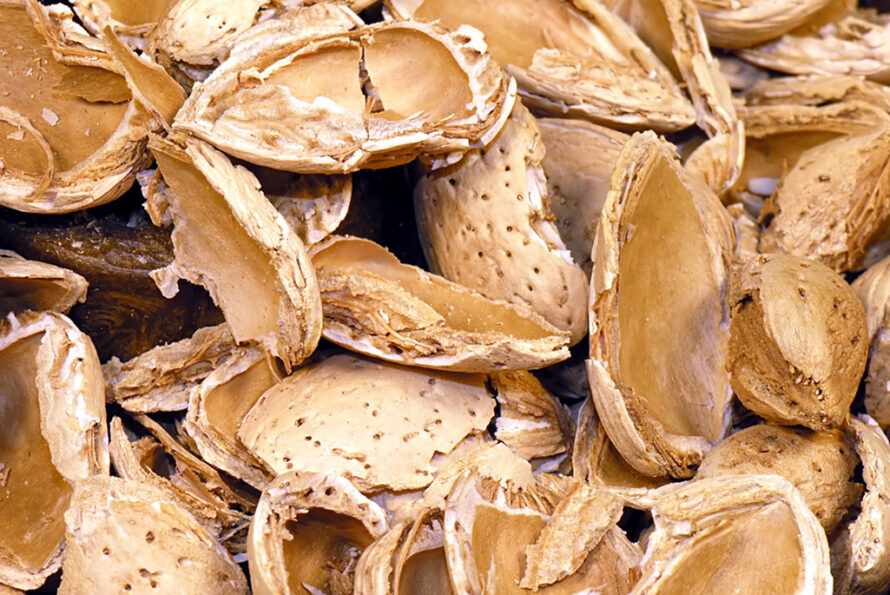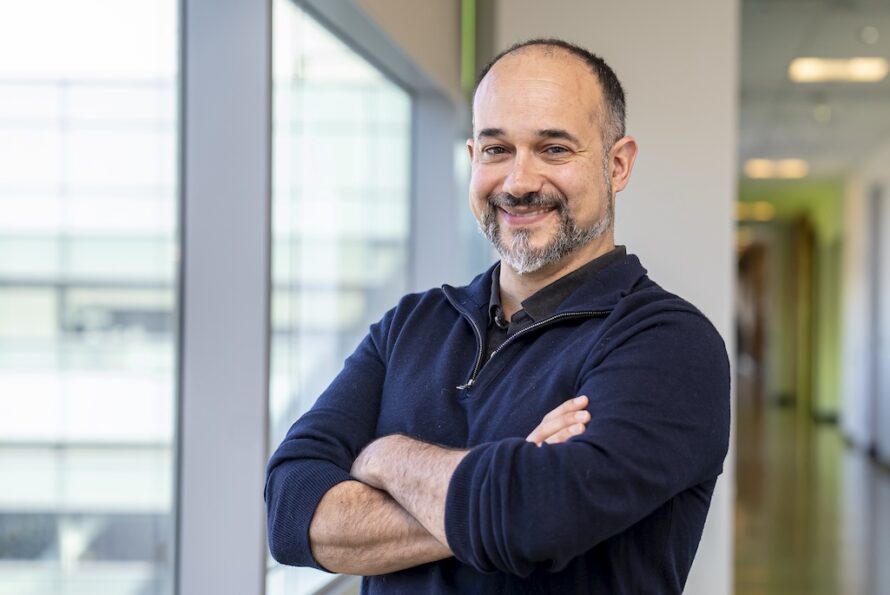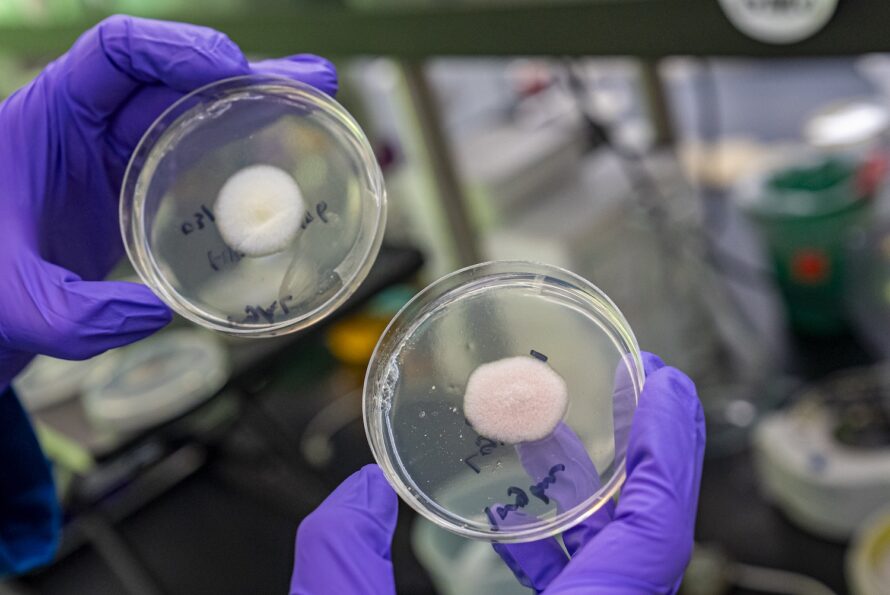Adapted from a news release by the Innovative Genomics Institute (IGI) at UC Berkeley.
The ability to genetically engineer plants is largely thanks to a microscopic helper: a bacterium called Agrobacterium tumefaciens. Agrobacterium in the wild causes damaging tumors in flowering plants, including some economically important crops, but its ability to insert its own DNA into host plants is what makes it both a pest to farmers and a powerful tool for biotechnology.
New research by a team that includes scientists from Lawrence Berkeley National Laboratory (Berkeley Lab) shows that some simple changes to Agrobacterium can significantly improve the efficiency of introducing DNA into a genome, also known as “transformation.” The work opens up new opportunities to more efficiently optimize crop plants and fungi for conversion into biofuels and bioproducts.
The research, published this week in Nature Biotechnology, was led by Patrick Shih, Deputy Vice President, Feedstocks Division and Director of Plant Biosystems Design at the Joint BioEnergy Institute (JBEI), a DOE Bioenergy Research Center led by Berkeley Lab. Shih is also an investigator at the Innovative Genomics Institute (IGI) at UC Berkeley.
“With our research, we’ve been able to improve our ability to introduce DNA into plant genomes. And by being able to transform plants and fungi more efficiently, we can improve our ability to make biofuels and bioproducts.”
— Patrick Shih
“The current plant transformation approach is slow and stands as a significant bottleneck in the push to develop biology-based fuels and materials that aren’t derived from petroleum,” said Shih, who is also a faculty scientist in Berkeley Lab’s Environmental Genomics and Systems Biology division.
“With our research, we’ve been able to improve our ability to introduce DNA into plant genomes,” said Shih. “And by being able to transform plants and fungi more efficiently, we can improve our ability to make biofuels and bioproducts.”
The milestone is part of a broader effort at Berkeley Lab to harness the power of microbes and plants to make new biology-based products, materials, and fuels while reducing our dependence on plastics and fossil fuels.
Optimizing a 40-year-old approach
The process of Agrobacterium-mediated transformation, or AMT, has become an increasingly widely used tool in both plant and fungal biotechnology in recent decades.
“AMT, at a really high level, is just a tool to insert DNA into target cells,” explains first author and UC Berkeley graduate student Matthew Szarzanowicz. “In the wild, it’s a plant pathogen that inserts a little piece of its own DNA into the plant causing a tumor that harbors the bacteria.”
Researchers co-opted and simplified this system in the 1980s to allow plant biologists to introduce DNA into plant genomes. The more complicated bacterial system was simplified into a small circular plasmid called a “binary vector” that was engineered to hold the DNA of interest and carry it into plant cells.
Over the past decades, plant scientists who perform AMT haven’t thought much about the structure of the binary vector itself: they use vectors that have been used by other labs in the past, add their DNA, and hope for the best. There has been relatively little attention paid to the backbone sequence of the binary vector.
“What we wanted to ask is: is this an optimized system?” says Szarzanowicz. “We had a strong sense that the answer was no because there had never been an attempt to actually engineer it to make it more optimized for AMT.”
The limits of plant transformation
“One of the problems is that the vast majority of plants can’t actually be transformed by Agrobacterium, so there’s a diversity problem,” says Shih. “But even for the ones that you can transform, there can be a pretty wide spectrum of how well it can transform.”
For biotechnology, efficiency is critical. Performing plant transformation is time consuming, resource intensive, and costly. The fewer times it fails, the faster and cheaper it becomes to do at scale.
Researchers at the IGI and JBEI are particularly interested in the crop sorghum for its possible applications in the production of advanced biofuels and bioproducts as well as for atmospheric carbon removal. But sorghum doesn’t always cooperate.
“We can transform it with Agrobacterium, but it costs a lot of money and time,” explains Shih. “But if you could increase and expedite the process of transforming the plant and get more events from a single shot on goal, that could really save a lot of time and money.”
More copies, more success
The backbone sequence of the binary vector contains a region known as the origin of replication, which is where DNA replication begins — essential for a plasmid to reproduce itself. This region also controls how many copies of the plasmid are produced, which can range from just one copy to several hundred. Previous literature suggested that higher copy numbers might lead to more efficient transformation. The team set out to see if they could control this by engineering plasmids with higher and higher copy numbers.
To test this, the team looked at four different origins of replication used in AMTs, engineered random mutants, and used a directed evolution assay that allowed them to select for individuals that had higher copy numbers.
“Then we just went back and found all of those mutations, and we showed that for a bunch of them that, lo and behold, they actually did increase the copy number. Then we used those plasmids for the binary vector that the bacteria uses to launch the DNA into the plant genome,” says Shih.
By increasing the copy number, the team confirmed that they could improve the efficiency of transformation, and the results were even more dramatic than they anticipated. They were able to improve the efficiency of plant transformation by up to 100%, and in fungi by up to 400%, all by adding simple point mutations to the origin of replication.
In addition to improving the ability of plant scientists to insert genes into plants, this finding also has significant implications for CRISPR gene editing in plants.
“One of the big problems in plants and fungi is the delivery of the CRISPR reagents,” explains Shih. “You introduce CRISPR-Cas9, you make your edit and you get rid of it, so it’s non-transgenic, you still have to be able to deliver it into the cell in the first place. Most of the time, we do this with Agrobacterium, so the question is how do we more efficiently deliver the Cas9 reagent to make that edit?”
Shih and Szarzanowicz hope this work will lead to more refined control over transformation, alleviating a key bottleneck in plant and fungal engineering.
“Hopefully plant scientists will look at this and say, maybe there’s more that we should be thinking about when we try to optimize these systems and maybe we can now use this tool set to begin tinkering in other species to see what works best,” says Szarzanowicz.
Shih is interested to see how this approach will impact fungal applications as well as plants.
“Agrobacterium has not evolved to transform fungi, but it can happen, and so we can improve upon that process,” says Shih. “Now we have this chassis to try to better transform many fungi that are super relevant to different industries from pharmaceutical companies to companies that are making biomaterials out of fungi.”
This research was supported by the DOE Office of Science.
###
Lawrence Berkeley National Laboratory (Berkeley Lab) is committed to delivering solutions for humankind through research in clean energy, a healthy planet, and discovery science. Founded in 1931 on the belief that the biggest problems are best addressed by teams, Berkeley Lab and its scientists have been recognized with 16 Nobel Prizes. Researchers from around the world rely on the Lab’s world-class scientific facilities for their own pioneering research. Berkeley Lab is a multiprogram national laboratory managed by the University of California for the U.S. Department of Energy’s Office of Science.
DOE’s Office of Science is the single largest supporter of basic research in the physical sciences in the United States, and is working to address some of the most pressing challenges of our time. For more information, please visit energy.gov/science.



